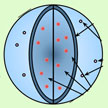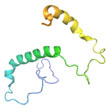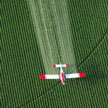How can nanotechnology transform food safety worldwide?
 New scientific review explores five high-potential applications of nanotechnology for combating contamination, spoilage and fraud issues facing the global food supply.
New scientific review explores five high-potential applications of nanotechnology for combating contamination, spoilage and fraud issues facing the global food supply.

 Subscribe to our Nanotechnology Spotlight feed
Subscribe to our Nanotechnology Spotlight feed
 New scientific review explores five high-potential applications of nanotechnology for combating contamination, spoilage and fraud issues facing the global food supply.
New scientific review explores five high-potential applications of nanotechnology for combating contamination, spoilage and fraud issues facing the global food supply.
 Food waste reduction offers multi-faceted wins for people and planet, improving food security, addressing climate change, saving money and reducing pressures on land, water, biodiversity and waste management systems. Numerous approaches are being taken to tackle the food waste problem. Some of them are technology-based with the goal of sustainably producing more food with less inputs and to minimize food waste from farm to fork. Particularly interesting is the case of precision agriculture, where nanotechnology and artificial intelligence (AI), combined with robotics, geolocalization, smart sensors, and big data analysis, could hold the key to unlocking global food security challenge.
Food waste reduction offers multi-faceted wins for people and planet, improving food security, addressing climate change, saving money and reducing pressures on land, water, biodiversity and waste management systems. Numerous approaches are being taken to tackle the food waste problem. Some of them are technology-based with the goal of sustainably producing more food with less inputs and to minimize food waste from farm to fork. Particularly interesting is the case of precision agriculture, where nanotechnology and artificial intelligence (AI), combined with robotics, geolocalization, smart sensors, and big data analysis, could hold the key to unlocking global food security challenge.
 Nanotechnology is a promising technological advancement that can revolutionize agriculture and food production systems, but the technology must be thoroughly researched before being implemented. Nanobiosensors, nanofertilizers, and nanopesticides have the potential to significantly change the agricultural world. Nanotechnology research related to agriculture is still in its early stages, meaning these new products are not ready to be put on shelves. In particular, toxicity of nanoparticles is a serious concern because it can affect the plants, the soil, and the farmers.
Nanotechnology is a promising technological advancement that can revolutionize agriculture and food production systems, but the technology must be thoroughly researched before being implemented. Nanobiosensors, nanofertilizers, and nanopesticides have the potential to significantly change the agricultural world. Nanotechnology research related to agriculture is still in its early stages, meaning these new products are not ready to be put on shelves. In particular, toxicity of nanoparticles is a serious concern because it can affect the plants, the soil, and the farmers.
 The ability to produce ammonia efficiently from air and water at room temperature and ambient pressure is of great interest in agriculture where it is used in fertilizers. In particular, the electrochemical reduction of nitrogen, in which the conversion of nitrogen to ammonia takes place under mild conditions, is highly relevant for the chemical industry that needs to cope with increasing demands for ammonia and at the same time is under pressure to reduce its ecological footprint. A new study describes novel single-atom catalysts as fascinating electrocatalysts for the application in nirtogen reduction.
The ability to produce ammonia efficiently from air and water at room temperature and ambient pressure is of great interest in agriculture where it is used in fertilizers. In particular, the electrochemical reduction of nitrogen, in which the conversion of nitrogen to ammonia takes place under mild conditions, is highly relevant for the chemical industry that needs to cope with increasing demands for ammonia and at the same time is under pressure to reduce its ecological footprint. A new study describes novel single-atom catalysts as fascinating electrocatalysts for the application in nirtogen reduction.
 Nanomaterials can improve the properties of food contact materials. Innovations of this kind are of particular interest for food packaging made out of plastic materials. The purpose of their use is to improve food storage and so to guarantee both freshness and quality. A further goal is to improve the technical properties of materials in order to make them sturdier more resistant to abrasion, and easier to process. With regard to environmental protection, little is known at present about the specific behavior of nanomaterials and composites during waste treatment processes.
Nanomaterials can improve the properties of food contact materials. Innovations of this kind are of particular interest for food packaging made out of plastic materials. The purpose of their use is to improve food storage and so to guarantee both freshness and quality. A further goal is to improve the technical properties of materials in order to make them sturdier more resistant to abrasion, and easier to process. With regard to environmental protection, little is known at present about the specific behavior of nanomaterials and composites during waste treatment processes.
 Trying to develop chemical free disinfection techniques, researchers are currently exploring the effectiveness of a nanotechnology based intervention method for the inactivation of foodborne and spoilage microorganisms on fresh produce and on food production surfaces. This method utilizes Engineered Water Nanostructures (EWNS) generated by electrospraying of water. These EWNS are 25 nm in diameter; remain airborne in indoor conditions for hours; contain Reactive Oxygen Species (ROS); have very strong surface charge (on average 10 electrons per structure) and have the ability to interact and inactivate pathogens by destroying their membrane.
Trying to develop chemical free disinfection techniques, researchers are currently exploring the effectiveness of a nanotechnology based intervention method for the inactivation of foodborne and spoilage microorganisms on fresh produce and on food production surfaces. This method utilizes Engineered Water Nanostructures (EWNS) generated by electrospraying of water. These EWNS are 25 nm in diameter; remain airborne in indoor conditions for hours; contain Reactive Oxygen Species (ROS); have very strong surface charge (on average 10 electrons per structure) and have the ability to interact and inactivate pathogens by destroying their membrane.
 Botulinum neurotoxins (BoNTs) are the most poisonous substances known to humans, with a median lethal dose (LD50) of 1ng per kg of body weight and are the cause of the life-threatening neuroparalytic illness botulism. Recent assays are very promising for practical use, they require expensive and technically complex equipment. Meeting a need for further development of assays for detection of BoNTs, researchers now have developed a nanopore-based assay for detection of BoNT-B.
Botulinum neurotoxins (BoNTs) are the most poisonous substances known to humans, with a median lethal dose (LD50) of 1ng per kg of body weight and are the cause of the life-threatening neuroparalytic illness botulism. Recent assays are very promising for practical use, they require expensive and technically complex equipment. Meeting a need for further development of assays for detection of BoNTs, researchers now have developed a nanopore-based assay for detection of BoNT-B.
 Nanotechnology applications are currently being researched, tested and in some cases already applied across the entire spectrum of food technology, from agriculture to food processing, packaging and food supplements. Specifically in agriculture, technical innovation is of importance with regard to addressing global challenges such as population growth, climate change and the limited availability of important plant nutrients. Nanotechnology applied to agricultural production could play a fundamental role for this purpose and research on agricultural applications is ongoing for largely a decade by now.
Nanotechnology applications are currently being researched, tested and in some cases already applied across the entire spectrum of food technology, from agriculture to food processing, packaging and food supplements. Specifically in agriculture, technical innovation is of importance with regard to addressing global challenges such as population growth, climate change and the limited availability of important plant nutrients. Nanotechnology applied to agricultural production could play a fundamental role for this purpose and research on agricultural applications is ongoing for largely a decade by now.